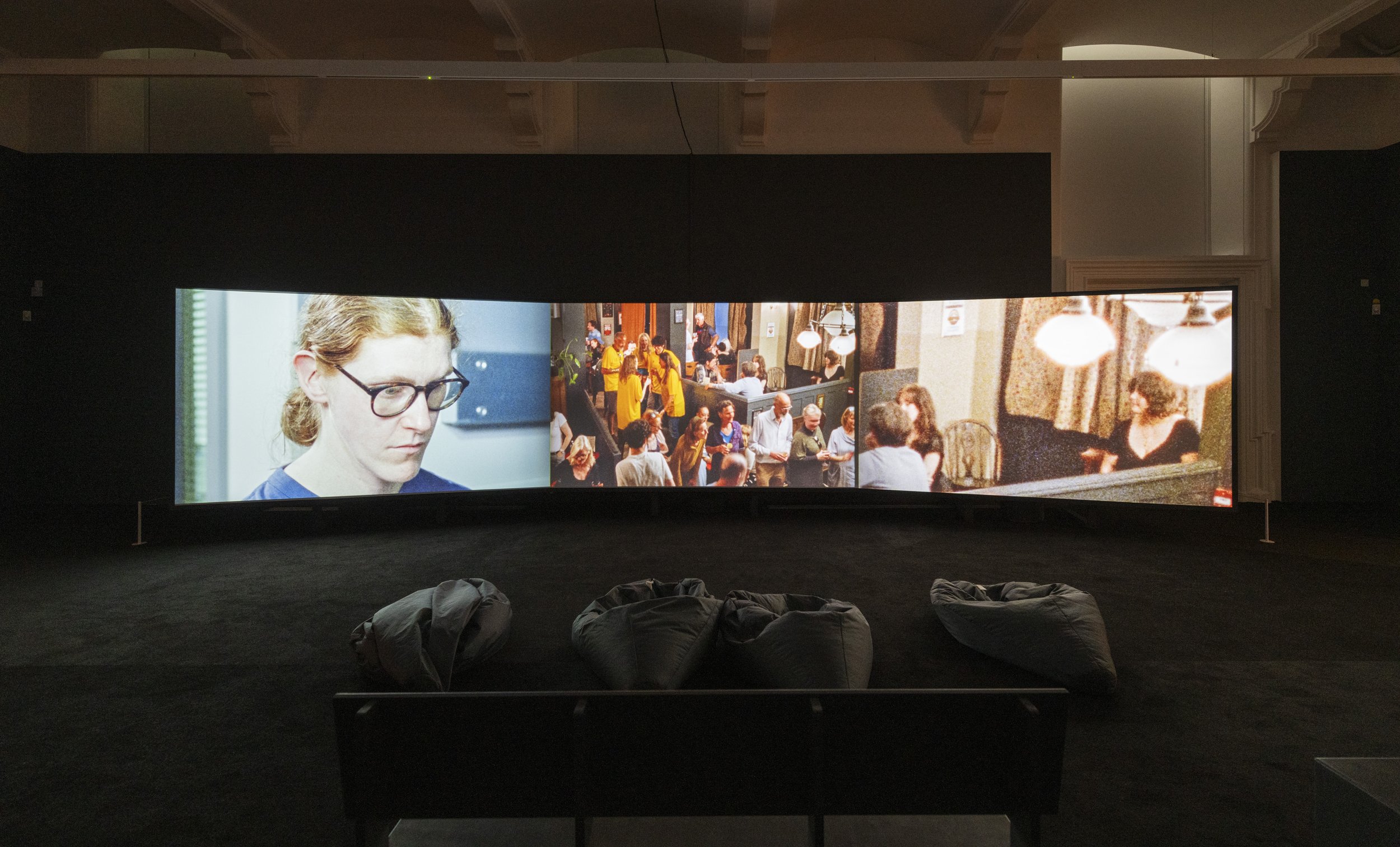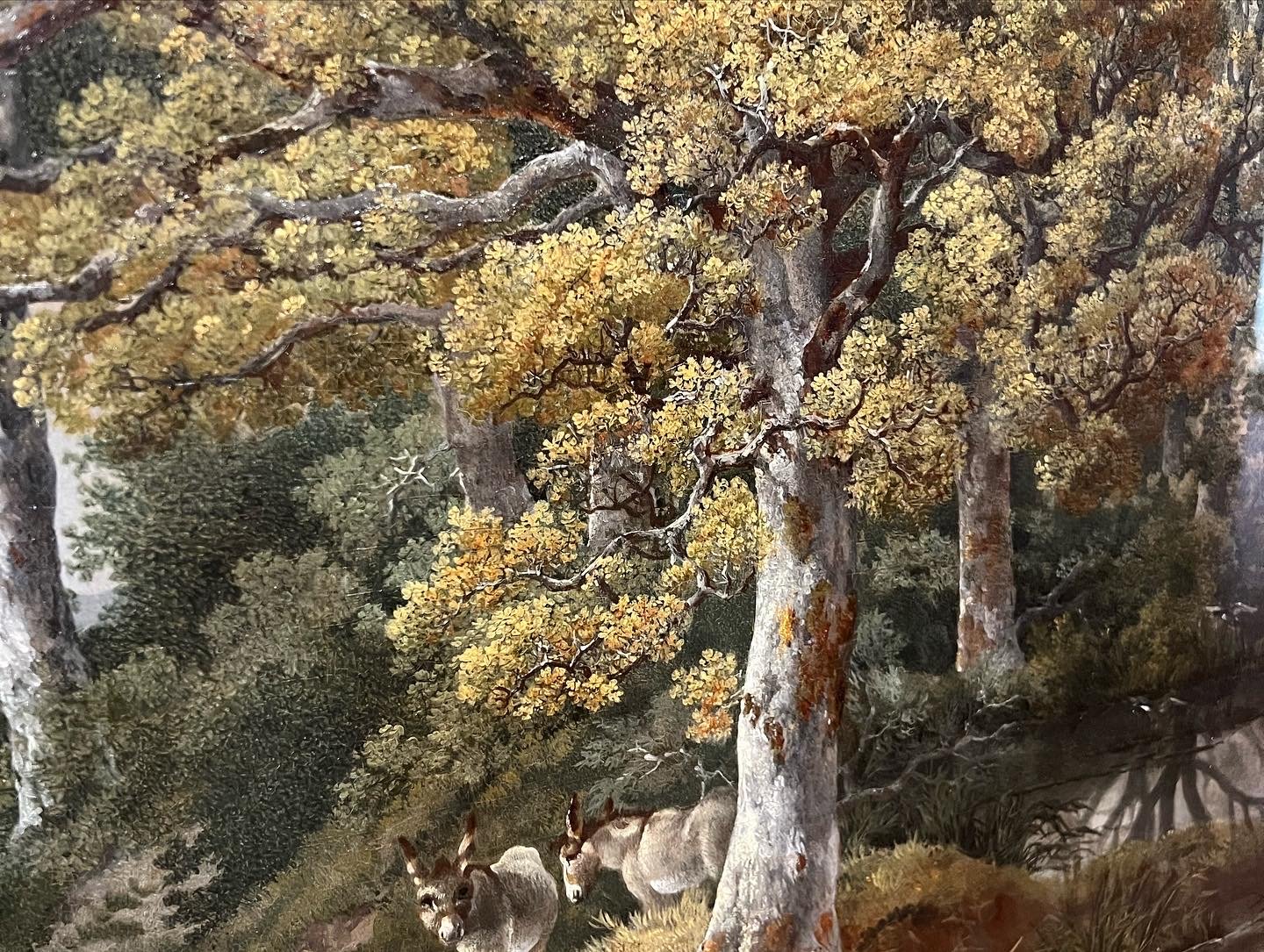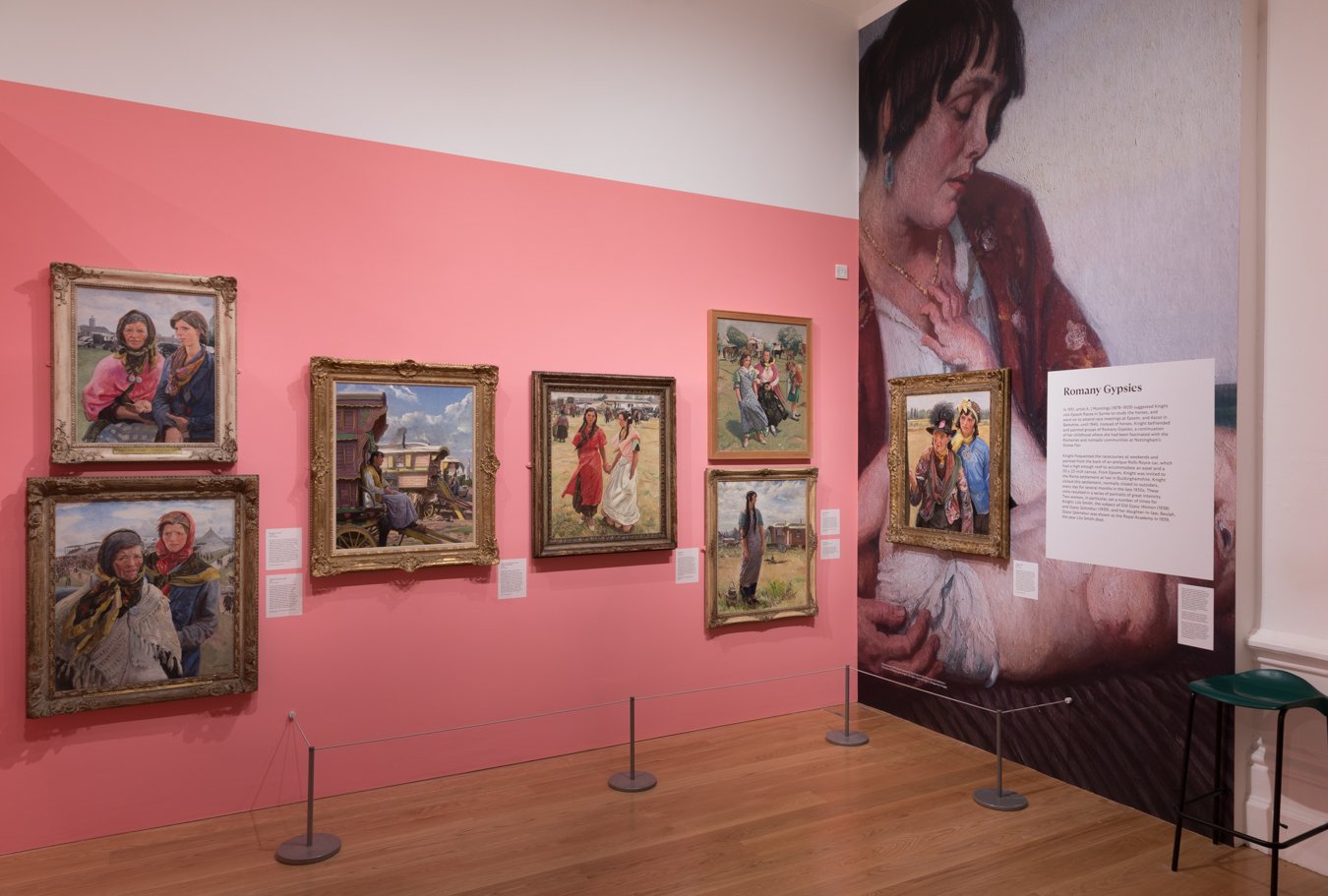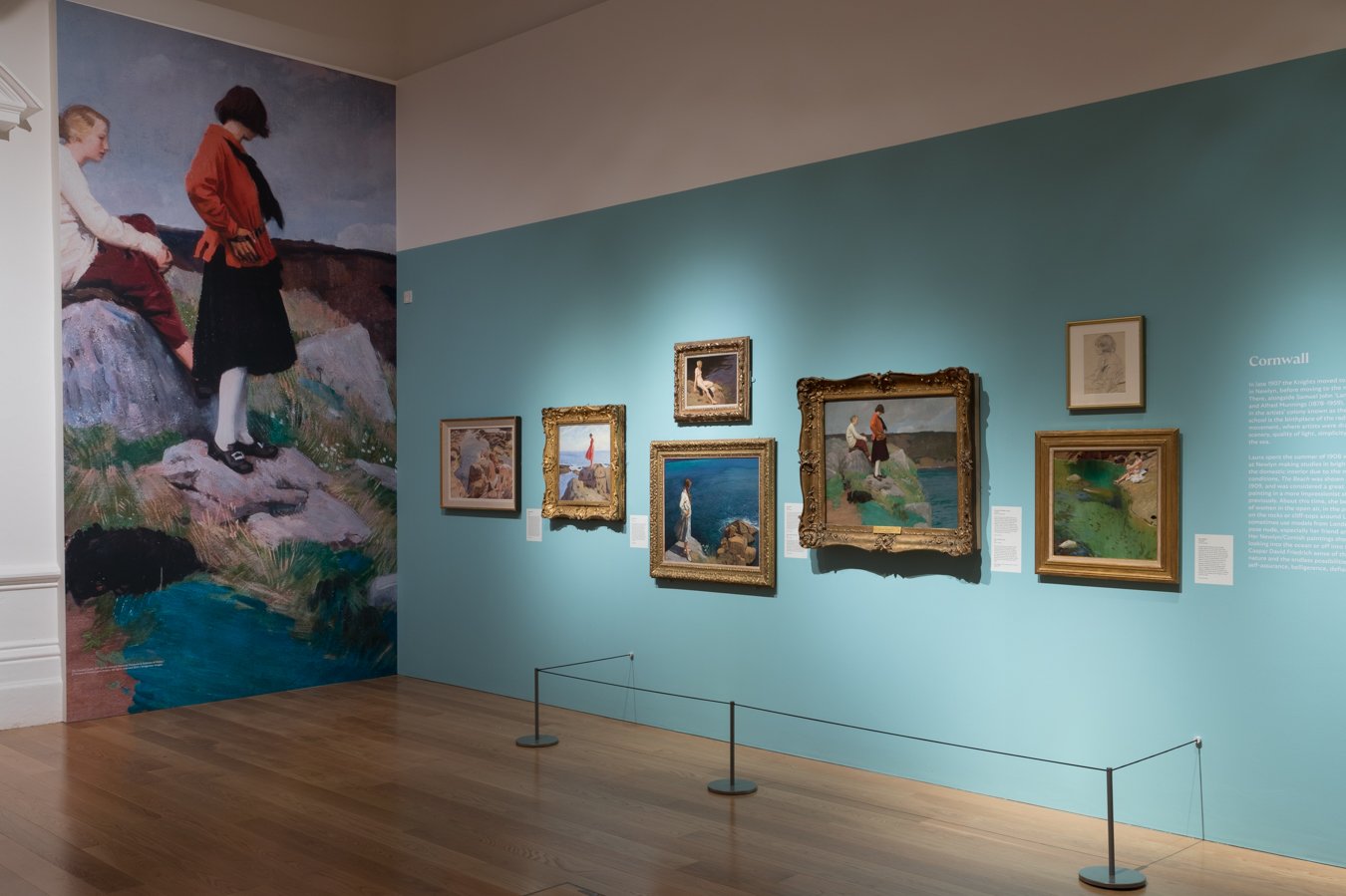
Curatorial Projects
I have over 20 years of experience delivering and curating exhibitions and Visual Arts projects across the public and artist-led realm within galleries, museums and heritage sites, indoors and outside, and with a variety of international organisations, collections, and artists.
Here are some highlights:
Now Showing
〰️
Now Showing 〰️
A Tale of 2 Lives: Christopher Samuel
Christopher Samuel is a multi-disciplinary artist whose practice is rooted in identity and disability politics, often echoing the many facets of his own lived experience. His work tells stories, often raising awareness of his experiences as a black disabled artist, addressing missing representations within archives, and sharing narratives from others in similar circumstances. Christopher’s work spans sculpture, ink drawings, film, print, and installation.
This artwork, commissioned by Nottingham Castle Museum & Art Gallery exclusively for the cafe space - an initiative to give a large-scale platform for underrepresented artists to create new work - is inspired by the artist’s own experience of going from having no control over his life, to taking agency over his circumstances and regaining a sense of self worth.
Christopher has co-curated ‘Kaleidoscopic Realms’ along with Jennifer Gilbert of Jennifer Lauren Gallery.
STIM CINEMA
25 November 2023 to 14 April 2024
Installation view of STIM CINEMA
STIM CINEMA – is a new touring exhibition, co-curated project, and moving image installation exploring repetitive actions and autistic experiences, tracking back to the earliest forms of moving image, and the birth of cinema and cinematic language. STIM CINEMA is part of Nottingham Castle’s season of new programming focusing on Neurodivergence.
The exhibition has been co-created by members of The Neurocultures Collective (Georgia Bradburn, Benjamin Brown, Sam Chown-Ahern, Robin Elliott-Knowles, Lucy Walker), with artist and filmmaker Steven Eastwood.
STIM CINEMA takes the action of stimming – ‘the practice of physical repetition as a way of taking sensory pleasure in recurrence, or of expressing and alleviating anxiety, and a common trait of autistic experience’ – as its starting point, connecting delight in repetition to the birth of cinema and to the contemporary fascination with GIFS.
The exhibition invites the audience to take pleasure in discovering hidden movements in every part of the frame, reminding us all of the pleasure we share in seeing actions rock and loop, and revealing that such stimulation is not only common to autistic experience but in the DNA of the moving image.
The exhibition encourages the viewer to consider our shared neurodivergence, and to discover stimming as a joyous perceptual and bodily possibility, one which challenges the very notion of normativity and is in fact a desirable state.
To accompany STIM CINEMA, I commissioned a special artwork from artist Sam Metz to create an interactive response to the exhibition through her ‘Drawing as Stimming’ practice, where visitors of all ages can create their own ‘stim’ with wire and add it to an ever-evolving sculptural form in the gallery.
Sam Metz installation
In addition, new artworks are featured in the Ducal Palace café by the first recipients of the Café Neuro commissions Kate Wand and Maddie Raithby, a project targeted exclusively for neurodivergent creatives in the East Midlands.
Cafe Neuro: Kand Wand (left) and Maddie Raithby (right).
‘Plantation’ by Tim Fowler, and ‘My Celebrities’ by Jemisha Maadhavji
June 2023 to January 2024, Nottingham Castle
As part of a new series of artistic interventions and responses to the museum collection and permanent displays, I invited Leicester-based artists Jemisha Maadhavji and Tim Folwer to create individual installations of their paintings in the Long Gallery, Ducal Palace Cafe and the Collections Gallery.
By pairing Jemisha Maadhavji’s ‘My Celebrity’ series of paintings with William Rankin’s ‘Hibiscus Flower’ within the Collections Gallery, the artist played with perspective and painterly illusion by hand-painting an 18th Century Chinoiserie-inspired yellow mural on the wall upon which she hung four highly detailed oil paintings. And in the Long Art Gallery, Maadhavji placed props from her studio in front of a painting hung from a curtain rail, provoking the interplay between the artwork and viewer again.
Initially sparked by tending to a banana plant during the Covid-19 pandemic, Fowler developed a profound interest in horticulture. This personal connection deepened as he discovered the ties to the symbolism and origins of this plant species, rooted in his Bajan (Barbadian) heritage from his mother’s side.
Fowler’s paintings depict his banana plants as resplendent semi-abstract forms on a large and oversized scale. His artistic experimentation with paint involves various techniques, including using a fire extinguisher, compressed air-powered nozzles, and self-constructed elongated brushes, mops, brooms, and squeegees. This results in a gestural, physical, and often street-art-inspired execution in bright bubblegum, neon pinks and pale blues; colours now rooted and consistent in Fowler’s paintings for decades. These paintings made a wonderful response and connection to decolonisation topics and our ‘Nature Up Close’ section of the Long Gallery.
Twenty-five recently discovered landscape drawings by English artist Thomas Gainsborough were presented in the exhibition Young Gainsborough: Rediscovered Landscape Drawings, paired with the film Illuminating the Wilderness, by 2021 Turner Prize nominees Project Artworks, which charts the pleasures and challenges of neurodiverse responses to the landscape. Both exhibitions, presented as a double-headliner, examined the enduring human relationship with nature.
Produced in the late 1740s when Gainsborough was in his early twenties, the drawings offer an intimate glimpse into the early career of this master of portraiture and landscape, highlighting his youthful enthusiasm for nature. The exhibition also features paintings and drawings from Gainsborough’s early years, along with works by the Dutch landscape painters who influenced him.
This exhibition has been organised in collaboration with Royal Collection Trust, York Museums Trust, National Gallery of Ireland and Nottingham Castle.
“Nature was his teacher and the woods…his academy”.
This quote about Gainsborough really struck me, not only because of my own research with trees but also with my interests and investigations into Forest Schools and alternative education provisions for individuals who don’t/can’t fit within rigid (mainstream) educations systems, especially Neurodivergents.
Thanks to Arts Council funding, I undertook a year researching Autistic Spectrum Disorder and Neurodivergency within the Visual Arts, which led me to the wonderful Project Artworks, an artist collective based in Hastings.
When I first viewed Illuminating the Wilderness I immediately saw the connection to nature, but also how landscape can inspire, nurture, or heal those who encounter it. In this case, we see adults with complex learning needs and their carers within the wilds of a vast glen and it’s woodland in inclement weather, ending in a candle-lit bothy where they spend an evening relaxed by drawing with charcoal and pencil on tables and in sketchbooks.
Illuminating the Wilderness is a film produced by Project Artworks, conceived and directed by Kate Adams and Tim Corrigan and filmed on location with Ben Rivers, Margaret Salmon and neurodivergent artists and makers, families and carers.
The 40-minute film follows the exploration of a remote Scottish Glen over several days and reveals the pleasures, challenges and shared experiences of neurodivergent responses to nature. Moments of humour, and tender consideration for each other, unfold in and around the landscape and weather systems of the mountains. The remoteness, scale and indifference of the landscape provide a rare sense of freedom and belonging for everyone involved.
Upon approval with Project Artworks, I co-designed (with Alex Pain, who realised my vision so perfectly with the build) a projection room “Bothy” to directly connect the gallery with the film, where visitors can also sit in candlelight to watch this beautiful film.
Young Gainsborough & Illuminating the Wildnerness
2 July to 13 November, Nottingham Castle
Laura Knight & Caroline Walker: A Female Gaze
19 March to 5 June 2022, Nottingham Castle
As part of my curatorial consultation for Nottingham Castle, I curated this exhibition featuring the work by two important female British artists, brought together for the first time in an ambitious presentation. Although born decades apart, both artists examine through paint the remarkable lived experiences of women, while individually celebrating subjects as varied as ballet performers, motherhood, and modern-day NHS heroes.
The exhibition celebrates the remarkable achievements of Nottingham artist Dame Laura Knight R.A (1877 -1970) by highlighting over 80 much-loved and critically lauded paintings and drawings. The selection features works made in Nottingham, her well-known behind-the-scenes portrayals of circus and ballet performers, officially commissioned portraits, her work as an appointed war artist, and intimate portrayals of friends and communities with whom she built close relationships.
In contrast, the work of critically acclaimed British contemporary artist, Caroline Walker (b. 1982), is presented in her first museum solo show within the UK. Her rich, atmospheric and often ambiguous oil paintings reveal the diverse social, cultural and economic experiences of women living in contemporary society. Blurring the boundary between objectivity and lived experience, Walker highlights often overlooked roles performed by women and the psychologically charged spaces they inhabit. The exhibition also features recent works based on time spent within the maternity ward where her daughter was born.
By pairing Laura Knight’s work with Caroline Walker’s, the exhibition not only looks at the developments by women artists over the past 100 years, but also considers the themes shared by both artists and examines why the female figure and the role women serve in society – the key protagonists in these works – is still such a strong and rich subject matter. These artists focus on the female experience, both in domestic settings and in the workplace, painting women from varying social classes and utilising an inquisitorial lens through which to paint their subjects.
A beautiful and richly illustrated catalogue accompanies this exhibition, with an introductory essay by myself, and a text by Jennifier Higgie, published by the fantastic BEAM editions here in Nottingham. This is currently available at the NCT shop for a very special exhibition-only price of £15.
This is a film I commissioned with the marvellous Reece Straw who visited Caroline in her studio.
Plant Blindness: Jason Singh
21 September 2019 to 22 March 2020, The Camellia House, Wollaton Hall
Plant Blindness by Jason Singh was a unique and immersive sound installation which used naturally occurring ‘biodata’ from plants to create a musical composition.
Artist, musician, beatboxer, and composer Jason Singh was invited to create, in his own inimitable way, an auditory response to Wollaton. Initially drawn to the beautiful architecture and acoustics of the glass house, a short residency enabled Singh to develop his ideas and he became inspired by the conditions in which the Camellia plants are grown. The camellia genus originates from Eastern Asia and was brought to the UK in the early 1700s. In the 19th century, it was believed that camellias could only survive our climate in an expensive glasshouse or conservatory. However, we now know that this creates the wrong environment for them and they survive only by constantly fighting against it.
An introduction to Plant Blindness. Film by Reese Straw
Excerpt of Martin Payne for Plant Blindness: LIVE performance.
Excerpt of Georgie Pope’s peformance to Plant Blindness: LIVE
Kindness: Prints and Drawings by David Shrigley
27 May to 10 September 2017, Newstead Abbey.
Inspired by Nottingham City Museums’ latest acquisition ‘KINDNESS’, we examine contemporary satire through the work of contemporary artist David Shrigley.
I paired David's works with an exhibition of Georgian satirical prints, which was curated by the British Museum and Ian Hislop.
Sasha Bowles (centre).
Reportrait
27 May to 10 September 2017, Nottingham Castle.
The portrait has continued to be one of the most recognised, revisited, and arguably the most celebrated art forms throughout history. Exclusive to Nottingham Castle, this exhibition demonstrates how classical and traditional figurative portraiture continues to inspire artists today, and remains relevant within contemporary artistic discourse.
Reportrait presented thirteen artists who have reimagined historical sources, altered or disrupted typical notions of how the portrait is defined, or used an image or reproduction as a starting point to create something new.
feat. PHILIP GURREY, MAISIE BROADHEAD, GLENN BROWN, SASHA BOWLES, PAUL STEPHENSON, MATTHIEU LEGER, ANNIE KEVANS, ANTONY MICALLEF, JASLEEN KAUR, SAMIN AHMADZADEH, JULIE COCKBURN, JAMES E SMITH AND JAKE WOOD-EVANS
James E Smith
Julie Cockburn
Matthieu Leger
Samin Ahmadzadeh
Maisie Broadhead
Glenn Brown
Anthony Micallef
Jake Wood-Evans
Paul Stevenson
Jasleen Kaur
Annie Kevans
Philip Gurrey
Strangers Not Allowed On This Works
25 March – 7 May 2017, Nottingham Castle.
Examining how manufacturing has changed the environments in which we live, this exhibition presented archival photographs of former Nottingham lace and John Player & Sons factories, alongside contemporary commissions: Ben Roberts, who examined how the arrival of the online shopping giant Amazon had upon a former coal-mining town, and David Severn who visited the historic Middleport Pottery, Stoke-on-Trent, the oldest continuous working china factory in Britain. Each photograph makes connections to local industries where economic success, and at times decline, has helped shape the Midlands and its people over time.
This exhibition was been staged in conjunction with FORMAT International Photography Festival coordinated by QUAD, Derby.
Installation view: John Hartley
Installation view: John Hartley
Installation view: John Hartley
Gordon Cheung: Here Be Dragons
30 April – 17 July 2016, Nottingham Castle.
Gordon Cheung is a contemporary artist whose work captures the mood of the global collapse of civilization – or a dystopian, prophetic vision of it – where moral, economic and environmental crises have spun out of control. Spiritual undertones are balanced alongside familiar contemporary images including sources from popular media, cyberspace, nature, and more recently, from historical painting. This solo exhibition, generously supported by Edel Assanti, London and Alan Cristea Gallery, London will feature new large-scale paintings, animations and digital works made especially for Nottingham Castle and shown here for the first time.
An ambitious and richly illustrated hard-backed book accompanied the exhibition, designed by Peter Willberg, featuring an introductory text by exhibition curator Tristram Aver and a critical essay by writer John-Paul Stonard.
30 April to 17 July 2016, Nottingham Castle.
Working with the Royal Collection, I designed and curated the layout of the main exhibition, and an accompanying NCMG collection displays of drawings drawn from over 9,000 works on paper. Using Leonardo’s sketches and notebooks as a springboard for exploring the importance of drawing throughout the history of art, the drawings in this gallery have been selected from the collection of Nottingham City Museums and Galleries.
These works on paper offer half-finished, momentary field sketches, preparatory designs, studies, or visual observations and musings from a wide range of artists, including: Richard Parks Bonington, Paul Sandby, Frank Auerbach, David Bomberg, Augustus John, Harold Knight, Henry Dawson, Marion Adnams and Graham Sutherland. Some of these drawings were made to be exhibited but many of them were never intended for public display. They all provide a glimpse of artists’ techniques and thought processes through time: a window to the world of the studio, life class or sketching tour.
In addition, I collaborated with the University of Nottingham's History of Art department for a supplementary exhibition detailing aspect of Leonardo's life.
Corinna Spencer: Portrait of a Lady
19 September 2015 – 17 January 2016, Nottingham Castle.
Portrait Of A Lady was an ambitious installation of over 1000 unique paintings, created specifically for the Castle’s South Hall stairwell by Corinna Spencer Spencer’s for her first major solo presentation of work in a Public gallery. Celebrating the unidentified or unknown female sitter throughout art history and popular culture, Portrait of a Lady also featured the Photo Booth Girls painting series, four of which were selected for the Nottingham Castle Open 2014, and are exhibited here in full for the first time.
Join in Building a Tower: Jake Kent & Dizzy Ink
21 November 2015 – 17 January 2016, Nottingham Castle.
Nottingham-based artist Jake Kent and print-collective Dizzy Ink were commissioned to create new work based on the themes of the V&A touring exhibition A World to Win: Posters of Protest and Revolution.
Kent & Dizzy Ink worked in collaboration and in response to the ideas of local young people by delivering four days of creative workshops exploring the themes of ‘A World to Win’. These workshops – attended by ESOL learners (English for Speakers of Other Languages) supported by Futures Advice Skills and Employment, Nottingham, Outburst, a LGBTQ youth group and Illuminate, Nottingham City Museums & Galleries young arts collective – were used by the artists as research and content to inform the new commissioned artworks.
Andrew Bracey: Reconfigure Paintings
6 December 2014 to 18 January 2015, Nottingham Castle.
ReconFigure Paintings is a series of work by Andrew Bracey that features parasitic, painted additions to the ‘host’ human figures within existing historical paintings. Bracey selected 20 figurative paintings from the Castle’s Fine Art collection as a foundation on which to create a body of new work. Responding to the diversity and breadth of this collection, Bracey worked on high quality reproductions of popular (and some lesser known) oil paintings that are usually on display in the Long Gallery – each varying in style, period and type of figuration. These reproductions have been worked over with crystalline paintwork, using the triangle as a simplest shape from which to build a complex structure.
Painter, Painter: Dan Perfect, Fiona Rae
3 May – 6 July 2014, Nottingham Castle.
Dan Perfect and Fiona Rae work in the free space between abstraction and the representational world, in unique and distinctive ways. Committed to the expressive and enduring language of painting, they also share a deep interest in technology, the ‘Modern’, and psychoanalytic thinking, with manifestly different outcomes in their work. Perfect and Rae are married and live together, working in different studios in the same building in London’s East End, whilst remaining resolutely individual in their practices.
Inter-artist relationships are not uncommon; long-term and supportive friendships and collaborations have been forged throughout art history in studios, universities, artist-run spaces, Parisian cafés, New York factory warehouses, pop-up exhibitions, and nowadays, free and open international dialogue and argument via the internet. They may not be usual however – there are complications – as making art most often requires a singular vision, unsuited to compromise and negotiation, along with an inevitable degree of narcissism as a pre-requisite. Scrutinized, one might discern argument, cross-pollination, challenge and competition in the artistic practices of artist-couples such as Jackson Pollock and Lee Krasner, Frida Kahlo and Diego Rivera, Harold and Laura Knight, and many others.
This exhibition toured to Southampton Museum & Art Gallery, and was accompanied by a fully illustrated catalogue, with texts by Tristram Aver and Martin Herbert.
Leonardo Da Vinci: 10 Drawings from the Royal Collection
Erratics: Alex Pain
29 September – 28 October 2012, Nottingham Castle.
Architecture is at the route of Alex Pain’s sculptures. Small details of a building’s decorative or structural design, such as pillars and skirting, may be removed, re-examined and expanded, resulting in a magnified version of the original shape. Similarly, large features or the contours of an edifice, an archway or the lines where buildings become sky, are reproduced and shrunk to much smaller, model-like proportions. The sculptures presented here are a mix of these two principles, deliberately toying with the use of scale.
Spotlight: Paul Waplington
23 November 2013 – 19 January 2014, Nottingham Castle.
In this first solo presentation of the artist’s work at Nottingham Castle, Spotlight: Paul Waplington focuses on paintings and drawings from the 1970s and 1980s where the artist depicted the social, urban and political landscape of the Industrial Midlands, including his home town of Nottingham.
By way of an introduction to the artist, the exhibition displays works from Waplington’s most prolific period, concentrating on the local life and architecture of Nottingham at a time where the city was experiencing significant economic change. Featuring views of Forest Fields, Alfreton Road, the Meadows and beyond, as well as images of Nottingham lace workers, coal miners and other studies of people at work, the exhibition recalls a recent but by-gone age, and demonstrates how radically the urban landscape of Nottingham and its locale have changed in the past 30 years. The exhibition features an insight into the artist’s character, and contributes to current discourse on Nottingham’s past and Waplington’s own memories of it, but also on the future shape of the City, as economic challenges and redevelopment change it once more.
Nottingham Street Art Festival:
Contemporary Prints from the V&A
Jon Burgerman: Papering Over the Cracks
SmallKid, GING and Amy Blackwell
DILK: A Retrospective
Salon Des Refusés
2 July – 25 September 2010, various locations, Nottingham.
To accompanying Street Art: Contemporary Prints from the V&A, I curated a series of events, talks, workshops and satellite exhibitions across Nottingham that explored contemporary Street Art printing themes and styles, as well as showcasing and supporting local talent. This subsequently spawned a series of independant festivals in subsequent years, including the popular annual 'Street Art Open' at Surface Gallery which is based on the model I introduced for the inaugral 'Salon des Refusés'.
Portrait of a City: Nottingham names & Faces from the 1500s to 2010
Tales of a City: Jo Metson-Scott
26 June – 19 September 2010, Nottingham Castle.
Conjuntos: Geoff Diego Litherland
31 October 2009 – 10 January 2010, Nottingham Castle.



































